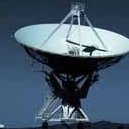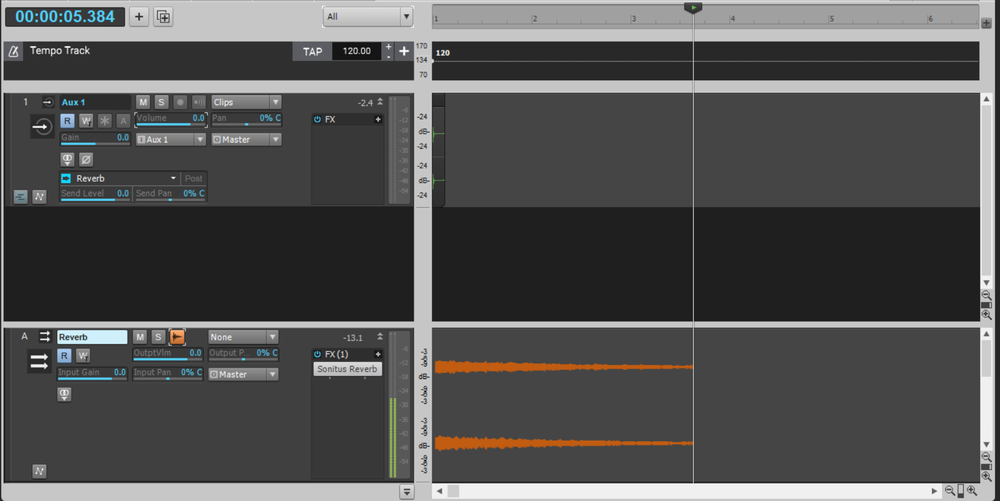-
Posts
4,917 -
Joined
-
Last visited
-
Days Won
5
Everything posted by David Baay
-

SIDECHAINING WITH OUTBOARD COMPRESSOR
David Baay replied to El Gato Loco's topic in Instruments & Effects
Meaning you want to have a track/bus in CW drive the siechain input of your compressor while it processes some other track/bus? I have not tried it but it should be pretty straightforward if you have the spare I/O channels availalable on your interface. Use an External Insert in the FX bin to apply the compressor to the relevant track/bus and route the sidechain signal to it via a Send on the other track/bus to another output. Are you encountering some specific issue? -
Okay, I see that quick grouping uses what 'normal' grouping calls Absolute control for Gain - where the fixed offset between them is maintained- while 'Relative' control is used for Volume where everything moves proportionally relative to -INF. The different default behaviors may or may not be intentional - I can see justfications for both. But if you use regular/persistent control grouping, you can get the Relative behavior on Gains.
-
Unless I'm misunderstanding something, it's working here on both Gain knobs in the Inspector and Console and sliders in the track and with or without holding Ctrl to quick-group.
-
Replied to your original post:
-
Are you using Workspaces? Workspaces can have their own bindings but it's not enabled by default.
-
Where and why are you double-clicking? Single-clicking an FX bin's bypass button will bypass all the effects in the bin as intended and I found that the second click of a double-click is ignored, giving the same result. But I don't know of anything related to FX management that requires a double-click.
-
No, but I have long wished that it were! Possible to implement?
-
? I frequently double-check myself before posting.
-
See TransDetectorModel= in AUD.INI (Preferences > Audio > Configuration File > Edit Config File).
-
Actually sends are post-fader by default; you have to go out of your way to make them pre-fader. But, the OP was talking about fading the clip which is pre-everything; when the clip fade hits -Inf, nothing will be sent/output anywhere. But a long enough reverb tail would still be audible. I'm not sure why Kevin's screenshots aren't showing that. A reverb with a 20-sec decay time should definitely be audible as well as visible in the preview waveform at the high vertical zoom level in the screenshot. Here's Sonitus with a 20-second decay after a single metronome click with no zooming:
-

Envelope Adjust Over Time Range Bug (?) [SOLVED]
David Baay replied to Bill Phillips's question in Q&A
Hmmm... now I'm confused. LOL In my case, it's the 'adjust tool' techique that creates new nodes. Ctrl+drag moves the existing nodes, resulting in linear transitions to the previous and next nodes on either side of the segment rather than the jumps you're after. ? -
If the goal is see the signal on CbB's Master bus as stated, Input Echo is necessary. If the goal is just to hear the input, then, yes, direct monitoring will do the trick.
-
The OP used the term 'send' but was really just having and issue with the track output. In all my years, I have almost never had a a problem with signal routing that didn't ultimately turn out to be my mistake and fixable without replacing anything.
-

ASIO and metronome completely out of sync
David Baay replied to Volker Schmid's topic in Cakewalk by BandLab
Sync problems can have many causes - often user-error/misunderstanding as bdickens suggested. Start a new thread and share a copy of the clip/project. -

Envelope Adjust Over Time Range Bug (?) [SOLVED]
David Baay replied to Bill Phillips's question in Q&A
Sticky-selected = track number is highighted. This is old terminology that may no longer appear in the Ref. Guide, but the functionality is unchanged for ages. EDIT: looks like I was mistaken that the time ruler selection wasn't happening in both cases. But it disapears on releasing the left-click after making the move if you don't have the track pre-selected so I hadn't initially noticed it happening while making the move. In any case, I can only reproduce a problem when selecting in the timeline as Mark described so its not clear to me that he's fixed your specific issue. -
That's why Outrage Productions suggested, "Check the folder preferences for project templates, then look in that folder using file explorer for the actual <project>.cwt files." Correcting the path or restoring the template files to the specified path from a backup should fix it. I can't say I've ever seen an update cause a probem like this, but I have all my folder paths pointing to custom locations that are not touched by installs/updates. If I know of some new content being added that I want to use, I copy it over to my custom locations. But I just checked the default Content path, and the default template files are there as expected.
-

Envelope Adjust Over Time Range Bug (?) [SOLVED]
David Baay replied to Bill Phillips's question in Q&A
This is working as expected in the latest release for me. The time ruler selection only happens if the track is sticky-selected rather than just focused. But either way works as described in the parent track without having to open the automation lane. I don't know why it's not working in your original video clip. Can your reproduce it in a new, basic project? -
Your screenshot shows the track is armed to record so the meter is showing a live input signal, but Input Echo is not engaged so that input is not being ouput to the Master bus. Rebooting alone would not have fixed that.
-
The problem with more frequent releases is that problems are more frequently attributed to updates when they're just garden-variety configuration/usage issues. A lot of level issues with exported files can be attributed to exporting the wrong source. One common case is exporting 'Entire Mix' when you have a send to a headphone output or other secondary monitoring output on your interface resulting in duplication of part or all of the mix in the rendered file. Another is having the level of the hardware/driver bus set to something other than 0dB and exporting Main Outs or Entire Mix. To avoid problems like this, I always recommend exporting just the Master Bus. The level of the exported file will always match the output level shown in the Master Bus meter - no ifs, ands or buts.
-
Start a new thread for your particular case. There are dozens of different possible causes of crackles. Your symptoms sound like your DPC Latency is spiking. https://www.resplendence.com/latencymon Run this tool at the same time as Cakewalk. and see what it shows. Common causes are Bluetooth and WiFi drivers; one or both may need to be disabled in BIOS to stop this.
-
Buying on JRRShop with code GROUP will get you another 20% off. https://www.jrrshop.com/pianoteq
- 1 reply
-
- 4
-

-

-

-

Cakewalk not selecting where I have selected in piano roll...
David Baay replied to Rok TheKasbah's question in Q&A
Enable Snap 'By' instead of Snap 'To' at measure resolution, and Ctrl+drag the selection instead of copy-paste (add Shift to constrain movement to one dimension - time or pitch, whichever is detected first.) -
Here's the thread for that specific theme:
-
What keyboard? Does it not have a vendor-supplied driver? I've never had a physical MIDI device that didn't have a dedicated driver so wouldn't ever have seen this.


